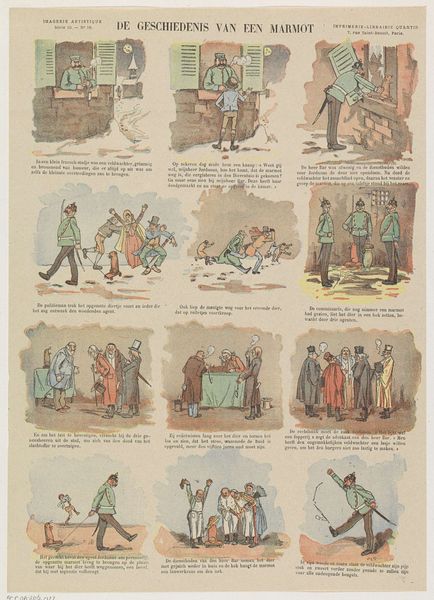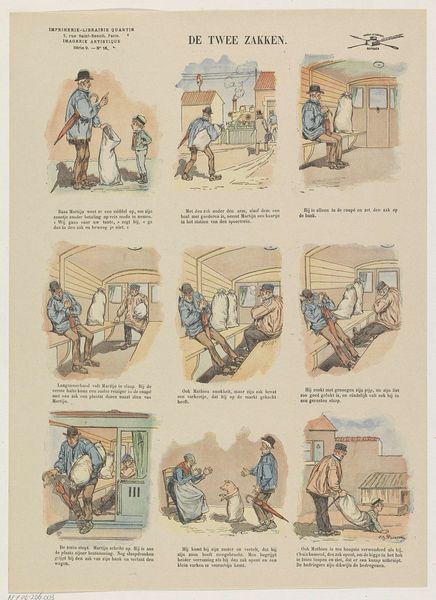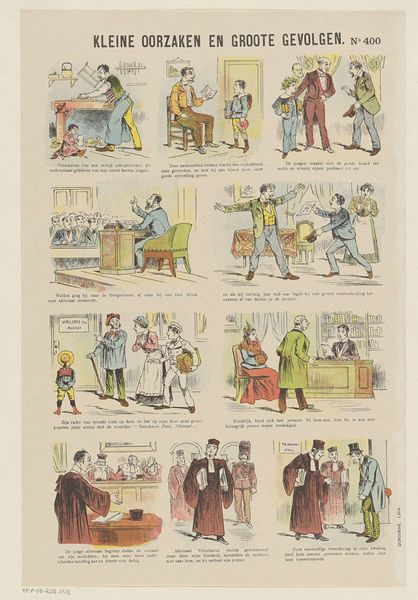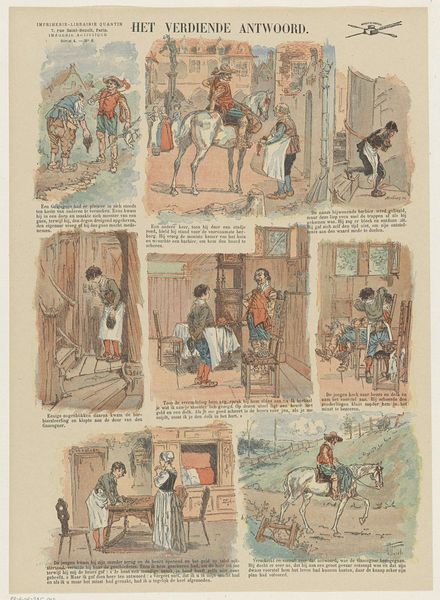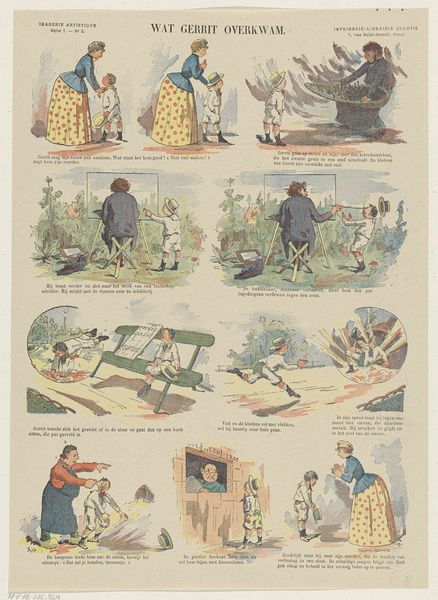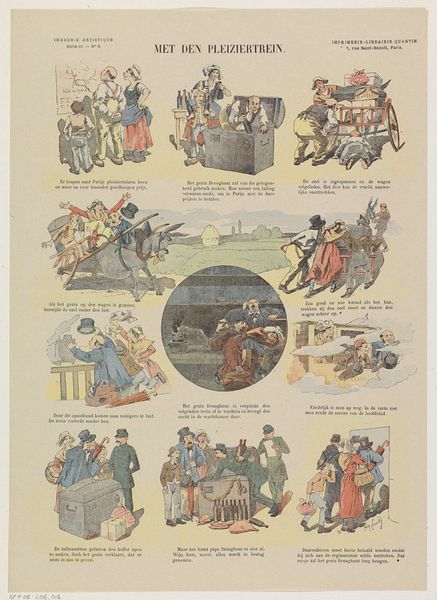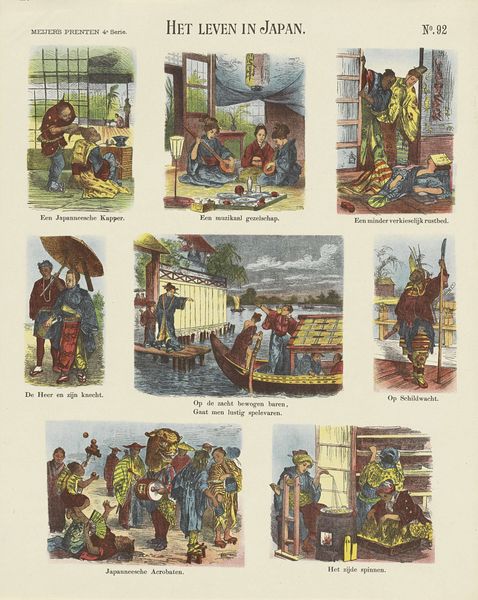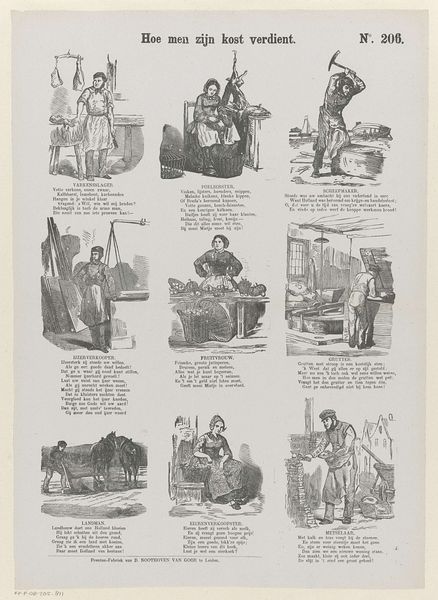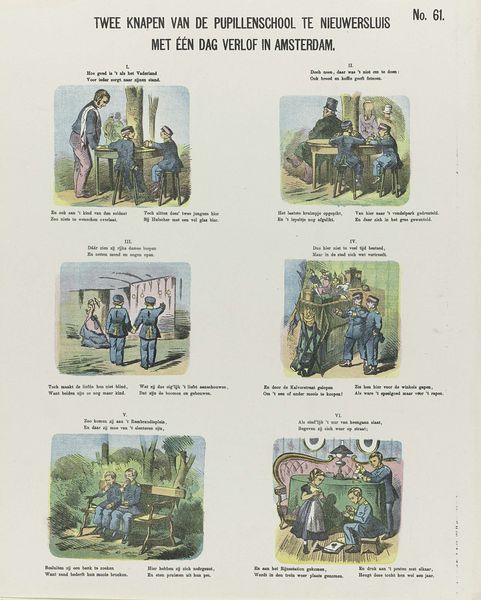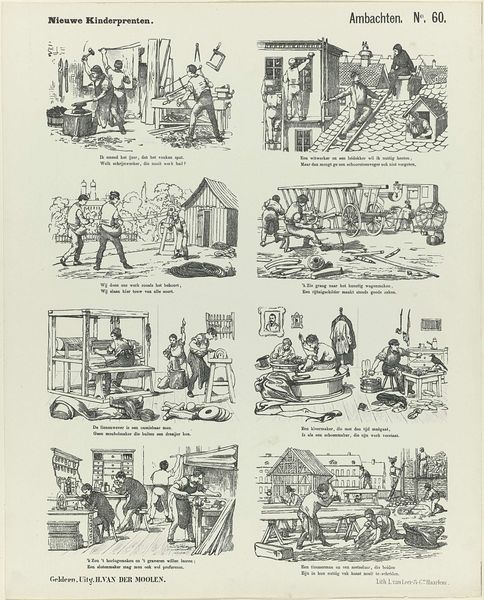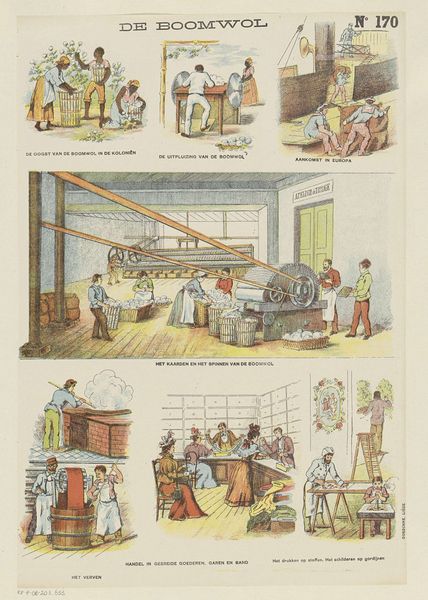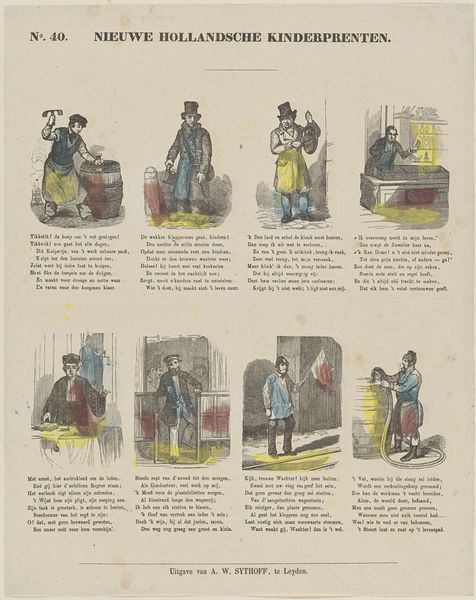
#
comic strip sketch
#
narrative-art
# print
#
comic
Dimensions: height 368 mm, width 265 mm
Copyright: Rijks Museum: Open Domain
Editor: So this print, dating sometime between 1876 and 1890, is titled "De grap van den kleinen Elzasser," which I think translates to "The Joke of the Little Alsatian." It's by Victor A. Poirson. It's formatted as a kind of sequential narrative or early comic strip, and it strikes me how static all the figures feel despite all the action. How do you interpret the composition of this work? Curator: The arrangement of the panels, though presented in a narrative sequence, functions more as a series of formal studies. Note the repetition of shapes—the circular vignette, echoing the implied circles of smoke. Consider, too, how Poirson deploys line to contain and define, segmenting space, yes, but also creating discrete fields for visual consumption. Is the eye truly drawn to a specific moment, or does it remain on the surface, appreciating the totality of the form? Editor: I see what you mean. The narrative seems almost secondary to the visual arrangement. Are you suggesting that the individual scenes don't necessarily matter as much as the overall design? Curator: Precisely. The charm of the narrative—its anecdotal quality—serves as a vehicle, not the destination. Observe how the artist manipulates color, restricting it to localized areas. Note the interplay between the positive space occupied by figures and objects and the negative space surrounding them. Do these contribute to narrative clarity, or do they prioritize aesthetic balance? Editor: That makes sense. I hadn’t considered how the limitations in color actually emphasize the form and the shapes within each panel. I was so focused on the potential story. Curator: Indeed. By analyzing the composition's structural elements – line, color, space – we can understand the print’s meaning more directly, appreciating its artistry independent of narrative interpretation. Editor: Thank you. I definitely have a new way of looking at narrative art and print making!
Comments
No comments
Be the first to comment and join the conversation on the ultimate creative platform.

